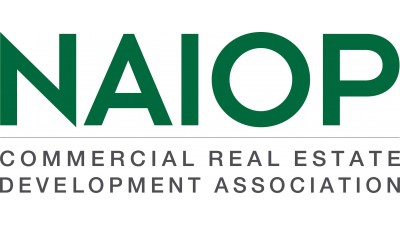There Are 5 Generations In The Workforce. Will Office Design Keep Up?
College sophomores on summer internships sit alongside industry veterans with five decades of experience: Welcome to the modern office.

With a workforce that spans five different generations — traditionalists, baby boomers, Generation X, millennials and Generation Z — companies today cannot build offices that appeal to only one age group. Instead, they need to consider the spectrum of work styles that their employees of all ages may have and design an office that can keep everyone comfortable and productive.
But some of the deeply held beliefs that companies have about generations liking specific styles of workspace are being overturned. Rather than assuming what their employees want, companies could do better to reach out to their employees and stay abreast of the latest trends.
“It’s not as simple as ‘boomers want cubicles’ and ‘millennials want open office,’” said Rivka Altman, a director of portfolio management at Invesco who will be moderating a panel on multigenerational office design at NAIOP’s upcoming CRE.Converge conference in Los Angeles.
The oldest members of Generation Z are taking their first internships, and some members of the older generations are working into their 70s and beyond. Much ink has been spilled over the idea that companies need to accommodate both ends of the spectrum, giving older employees larger, private offices and making room for the loose chairs, couches and standing desks that have become hallmarks of a millennial-driven open office.
But that sort of dichotomy may not conform to employees' actual work preferences. Many digital-native millennials can embrace and appreciate the quiet of a cubicle, while baby boomers can see the benefits in comfortable, collaborative spaces.
“A lot of the things we say that younger employees want — more light, more access to open space — I don’t believe for one second that those are specific to younger people,” said Shannon Woodcock, managing director of workplace strategy at Savills. “Older employees need them just as badly, but they may not be voicing that need as much.”
The key, she said, lies not in catering to any particular age demographics, but in considering the various “buckets” of employees who share the same work style and then making design choices based on productivity and company culture.
The growth of remote work, for instance, has appeal across the generations, with employees of all ages finding reasons to appreciate the flexibility and improved work-life balance that remote work provides.
Now that employees can exert some control over where, when and how they work, Woodcock said, the physical attributes of the workplace are more important. In other words, the office has to be a compelling place to work.
“Workspaces are starting to become Instagrammable,” Woodcock said. “Having a well-designed office has really become a social capital contest.”
What goes into that social media-friendly design is really a matter of company culture, she said, but it typically involves amenities and facilities that cater to a diverse set of work styles: bright, airy open spaces with bench-style desks contrasted against nooks and conference rooms for private or group work.
“There’s no one-size-fits-all solution here,” Altman said. “It’s going to differ company by company, and even office by office in the same company, and assumptions shouldn’t be made that what works in one office will work in another.”
She mentioned that the Invesco office in Dallas switched in the last few years from a model with individual offices and a cubicle bullpen to an open office with bench-style desks. The transition, Altman said, was made to increase usable space and was well-received by older and younger employees alike.
Having a variety of different seating options can be a good starting point to help companies gauge what works, Altman said. Small conference rooms can make a positive difference in an open office plan, cutting down on noise and letting teams brainstorm in privacy.
Altman is also skeptical that open office is a dying office design concept, as many publications would have it.
“It’s really an equitable arrangement for an office, so I don’t think it’s going anywhere,” she said. “I like having other people right around me, and accessibility to everyone in the office.”
The energy and simplicity of having every employee in a single open floor may be part of what is behind the push into offices in mega-buildings like Chicago’s Merchandise Mart or its Old Main Post Office, each of which feature single floor plates with hundreds of thousands of square feet.
In an ideal world, landlords, developers and tenants would share an equal passion and drive for crafting innovative workspaces. Yet while more landlords and developers are taking it upon themselves to collect data to inform and deliver the office spaces their tenants want, Woodcock said, tenants themselves are behind today's most productive and progressive offices.
“The best companies have taken their identities and distilled them to their most essential parts to apply them in the workspace,” Woodcock said.
Altman and Woodcock will take part in a panel on designing multigenerational offices at NAIOP’s CRE.Converge conference in Los Angeles, Oct. 14-16.
This feature was produced in collaboration between Bisnow Branded Content and NAIOP. Bisnow news staff was not involved in the production of this content.

